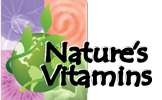As a person ages it is inevitable that their vision will diminish. Age Related Macular Degeneration (AMD), for millions of people over the age of 55, is a more serious condition. AMD is an irreversible eye disease and ultimately leads to vision impairment and even blindness.
AMD is the number one cause of blindness and visual impairment among elderly white Americans (54% of cases) especially women. About 2 million Americans have advanced AMD while over 8 million people have intermediate AMD with the risk that the disease will progress to the more advanced stage. The likelihood of getting this disease increases after the age of 55.
AMD is a progressive disease in which the light and color sensing cells in the macular region of the retina in the back of the eye deteriorate. As the disease progresses, central vision is lost. Central vision is responsible for detailed tasks like reading, driving and facial recognition.
There are 2 types of age related macular degeneration:
Dry-This is the most common form of the disease and accounts for 85-90% of all AMD cases. Dry AMD is defined by a buildup of drusen (yellowish deposits) beneath the retina. Symptoms of advanced AMD may include spots or holes in the center field of vision or blurred vision. These blurred spots become bigger and darker as the disease progresses. Usually dry AMD effect one eye first and then can spread to the next eye.
Wet-This form is a more severe form of AMD with a rapidly worsening loss of vision. With the wet form of AMD there is a growth of abnormal blood vessels under the macula. These blood vessels are very fragile. Damage to the macular happens when these blood vessels leak fluid and blood causing vision distortion and blindness.
There has been much research that suggests that diet and supplements can be influential in eye diseases related to aging like AMD.
ARED-One of the most widely publicized studies relating supplements and AMD was conducted the NEI (National Eye Institute) part of the NIH (National Institute of Health. Over 4700 people, between 55 and 80 years of age, participated in the study. Participants received the following antioxidant “cocktail” or a placebo:
Vitamin C (500 MG)
Vitamin E (400 IU)
Beta Carotene (15 MG)
Zinc (80 MG)
Copper (2 MG)
A 25% reduction in risk of developing AMD was seen in individuals who were identified as having a higher risk for the disease. For those people who already had AMD a reduction in vision loss risk of 19% was seen.
AREDS2-This 5 year companion study began in 2006. It was undertaken with the idea that by changing the antioxidant “cocktail” the results obtained by AREDS might be improved. Beta Carotene was removed. Zinc was removed or reduced and Omega 3 (1000 MG), Lutein (10MG) and Zeaxanthin (2 MG) were added. For participants with low dietary lutein/zeaxanthin supplementation a lowered risk of advanced AMD and a reduced need for cataract surgery was seen. Other prominent studies reinforced the results seen in AREDS2.
ASK US. WE KNOW. NOBODY KNOWS NUTRITION LIKE WE DO. NOBODY !








